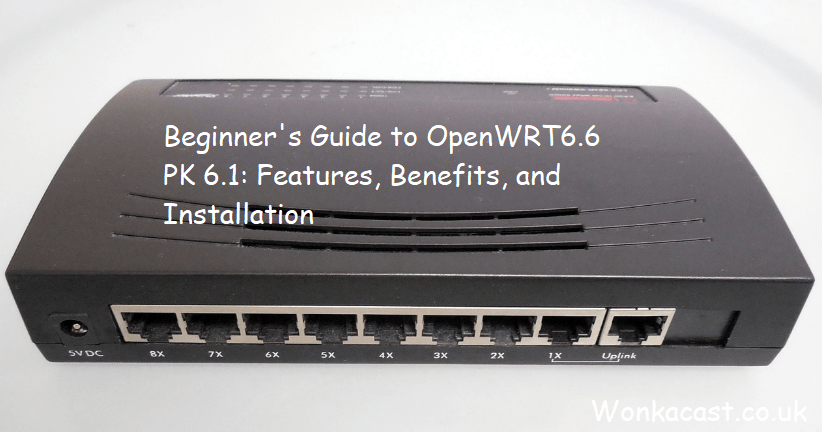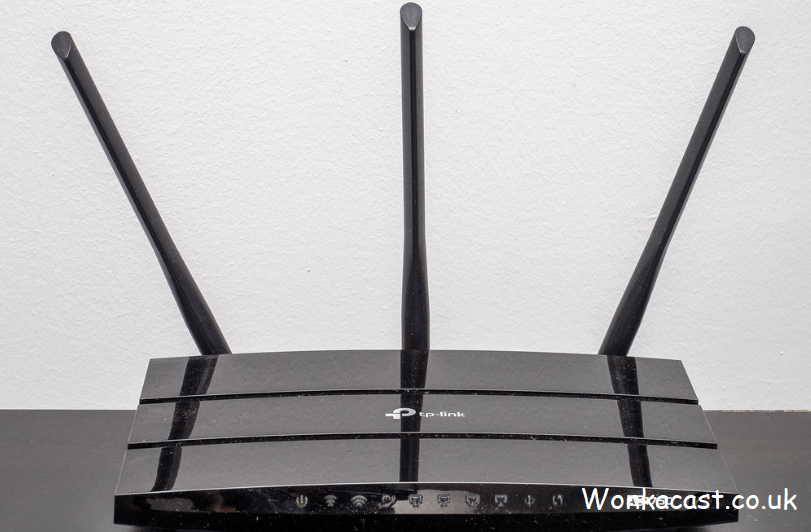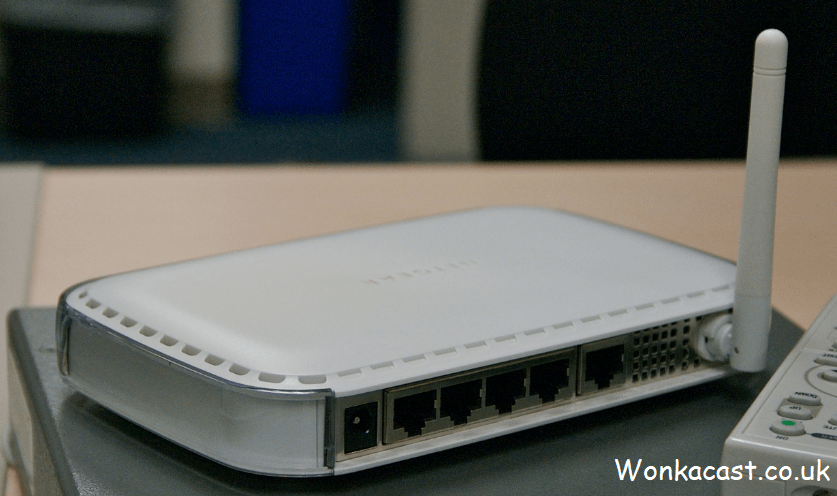Introduction
In today’s digital age, a reliable and customizable router is essential for any home or office network. This is where OpenWRT6.6 PK 6.1 comes into play. OpenWRT is an open-source firmware that transforms your standard router into a powerful networking tool, allowing for extensive customization and control. This beginner’s guide will explore the features, benefits, and installation process of OpenWRT6.6 PK 6.1, making it easier for you to enhance your network experience. Whether you’re a novice or a seasoned tech enthusiast, this guide will provide you with all the information you need to get started.
Understanding OpenWRT6.6 PK 6.1
What is OpenWRT?
OpenWRT is a Linux-based firmware specifically designed for routers. It offers more features and flexibility than traditional router firmware, allowing users to customize their networking experience significantly. OpenWRT6.6 PK 6.1 is a specific version that includes several enhancements and updates from previous releases.
Key Features of OpenWRT6.6 PK 6.1
- Customizable Interface: One of the standout features of OpenWRT6.6 PK 6.1 is its user-friendly web interface, LuCI. This interface allows users to easily manage network settings, configurations, and advanced features without needing extensive technical knowledge.
- Package Management System: OpenWRT6.6 PK 6.1 includes a robust package management system that enables users to install and remove software packages as needed. This flexibility allows you to enhance your router’s capabilities by adding features like VPN support, traffic monitoring, and parental controls.
- Improved Security: OpenWRT6.6 PK 6.1 emphasizes security with regular updates and patches. Users can configure advanced security measures such as firewall settings and secure Wi-Fi protocols to protect their network from vulnerabilities.
- Advanced Networking Features: With OpenWRT6.6 PK 6.1, users can leverage advanced networking features such as Quality of Service (QoS) to prioritize bandwidth, VLAN support for segmenting networks, and advanced routing protocols.
- Extensive Device Compatibility: OpenWRT6.6 PK 6.1 supports a wide range of devices. Whether you have an old router you want to repurpose or a new one that lacks features, there’s a good chance it can run OpenWRT.
- Community Support: OpenWRT boasts a large and active community of users and developers. This support means that if you encounter any issues or have questions, you can find help through forums, documentation, and tutorials.
Benefits of Using OpenWRT6.6 PK 6.1
Enhanced Performance
OpenWRT6.6 PK 6.1 can significantly improve your router’s performance by optimizing network traffic and minimizing latency. This is particularly beneficial for activities that require stable connections, such as online gaming or video streaming.
Customization
The ability to customize settings and install packages means that users can tailor their networking experience to fit their specific needs. Whether you want to set up a guest network, monitor bandwidth usage, or implement a VPN, OpenWRT6.6 PK 6.1 provides the tools to do so.
Cost-Effective Solution
By repurposing an old router with OpenWRT6.6 PK 6.1, you can save money while upgrading your network. This firmware breathes new life into older hardware, extending its usability and providing modern features without the expense of purchasing new equipment.
Increased Control
With OpenWRT6.6 PK 6.1, users gain greater control over their network configurations. This includes the ability to manage connected devices, configure network security settings, and monitor traffic patterns—all from an intuitive interface.
Preparing for Installation
Before diving into the installation process of OpenWRT6.6 PK 6.1, it’s essential to prepare adequately to ensure a smooth transition.
Checking Compatibility
- Device Compatibility:
Check the OpenWRT Table of Hardware to confirm that your router is compatible with OpenWRT6.6 PK 6.1. The installation process may vary depending on the device, so ensure you have the correct version for your router model.
- Backup Existing Settings:
If you currently have a different firmware on your router, it’s wise to back up your existing settings. This will allow you to restore your configuration if needed.
- Gather Required Tools:
You’ll need a few tools to assist in the installation process:
- A computer or laptop connected to the router.
- An Ethernet cable to connect your computer to the router.
- The firmware file for OpenWRT6.6 PK 6.1, which can be downloaded from the official OpenWRT website.
Installation Process of OpenWRT6.6 PK 6.1
Step 1: Accessing the Router’s Admin Interface
- Connect to the Router: Use an Ethernet cable to connect your computer directly to one of the LAN ports on the router.
- Open a Web Browser: Launch a web browser and enter the router’s IP address in the address bar (commonly 192.168.1.1).
- Log In: Enter the administrator credentials (often found on a sticker on the router) to access the admin interface.
Step 2: Flashing the Firmware
- Locate the Firmware Upgrade Section: In the admin interface, find the firmware upgrade or firmware flashing section (the exact wording may vary).
- Upload the OpenWRT6.6 PK 6.1 Firmware: Click the option to choose the firmware file you downloaded earlier, then select the OpenWRT6.6 PK 6.1 file.
- Initiate the Upgrade: Confirm the action to start the firmware upgrade. This process may take a few minutes, during which the router may reboot. Do not interrupt this process.
Step 3: Initial Configuration
- Reboot the Router: Once the firmware upgrade is complete, the router will reboot automatically.
- Reconnect to the Router: You may need to reconnect to the router using the Ethernet cable.
- Access OpenWRT Interface: Open a web browser again and enter the router’s new IP address (commonly 192.168.1.1 or 192.168.0.1) to access the OpenWRT interface.
Step 4: Basic Setup
- Set Up Admin Password: The first time you log into OpenWRT6.6 PK 6.1, you’ll be prompted to set an administrator password. Choose a strong password for security.
- Configure Basic Settings: Follow the initial setup wizard to configure basic settings like WAN connection type (DHCP, static, PPPoE) and Wi-Fi settings.
- Save Settings: Make sure to save your settings and reboot the router if prompted.
Advanced Configuration
Once the basic setup is complete, you can delve into more advanced configurations to fully utilize OpenWRT6.6 PK 6.1’s features.
Setting Up Wi-Fi Networks
- Configure Wireless Settings: Go to the “Network” section and select “Wireless.” Here, you can set up your Wi-Fi SSID, security settings, and more.
- Guest Networks: Consider creating a separate guest network for visitors. This keeps your main network secure while allowing guests internet access.
Implementing Quality of Service (QoS)
- Access QoS Settings: Navigate to the “Network” menu and select “QoS.”
- Prioritize Traffic: You can set up rules to prioritize bandwidth for specific devices or types of traffic, ensuring critical applications like gaming or video conferencing have the necessary resources.
Installing Additional Packages
- Access the Package Management System: Go to the “System” menu and select “Software.”
- Search and Install Packages: You can browse available packages to enhance your router’s functionality, such as VPN services or additional security features.
Monitoring Network Traffic
- Use the Dashboard: OpenWRT6.6 PK 6.1 includes a dashboard that provides real-time statistics on network usage.
- Traffic Monitoring Tools: Consider installing packages like “luci-app-nlbwmon” for detailed bandwidth monitoring and reporting.
Troubleshooting Common Issues
While installing and configuring OpenWRT6.6 PK 6.1 is generally straightforward, you may encounter some common issues:
- Router Fails to Boot: If the router fails to boot after the firmware upgrade, you may need to perform a factory reset. This usually involves holding down the reset button for a specified duration.
- Unable to Access the Admin Interface: If you can’t access the OpenWRT interface, ensure your device is properly connected to the router and that you are using the correct IP address.
- Poor Wi-Fi Performance: If you experience slow or unstable Wi-Fi, check your wireless settings and ensure that you are using the optimal channel and frequency band.
- Device Not Connecting: If a device fails to connect, check its settings and ensure it is compatible with the Wi-Fi security settings you’ve configured.
Conclusion
OpenWRT6.6 PK 6.1 offers an incredible opportunity to transform your home or office network into a high-performance, customizable system. This beginner’s guide has covered the essential features, benefits, and installation steps to help you navigate OpenWRT successfully. With its flexibility, enhanced performance, and robust community support, OpenWRT6.6 PK 6.1 is an excellent choice for anyone looking to optimize their networking experience. By taking the time to explore its features and configurations, you can significantly improve your network’s speed, security, and overall performance. Whether you’re managing a home network or a small business, OpenWRT6.6 PK 6.1 empowers you with the tools to create a reliable and efficient networking environment.
As you continue your journey with OpenWRT6.6 PK 6.1, remember to engage with the community, seek help when needed, and keep your router updated with the latest security patches. This will ensure that you get the most out of your OpenWRT experience, keeping your network running smoothly and securely for years to come.
Resources
To further assist you in your OpenWRT journey, consider checking out the following resources:
- OpenWRT Documentation:
The official OpenWRT website provides extensive documentation, including guides for advanced configurations and troubleshooting tips.
- Community Forums:
Engaging with the OpenWRT community through forums can help you find solutions to specific issues, share experiences, and learn from other users.
- YouTube Tutorials:
Visual learners may find YouTube tutorials helpful for step-by-step installation and configuration processes.
- Third-Party Guides:
Various tech blogs and websites offer guides and tips for optimizing OpenWRT setups, providing alternative perspectives and suggestions.
- Online Courses:
If you want a more structured learning experience, consider online courses that cover networking fundamentals, OpenWRT configuration, and advanced networking concepts.
Final Thoughts
Transitioning to OpenWRT6.6 PK 6.1 can initially seem daunting, but the rewards are well worth the effort. With its robust feature set and flexibility, OpenWRT empowers users to take control of their networking environment fully. By following the steps outlined in this guide and leveraging the community resources available, you can build a powerful, reliable network tailored to your needs.
As technology evolves, staying informed and adaptive is crucial, and OpenWRT6.6 PK 6.1 positions you to stay ahead in the ever-changing world of networking. Embrace the journey, experiment with various features, and enjoy the newfound capabilities of your enhanced router!
FAQs for “Beginner’s Guide to OpenWRT6.6 PK 6.1”
1. What is OpenWRT6.6 PK 6.1?
OpenWRT6.6 PK 6.1 is an open-source firmware designed for routers and embedded devices. It provides users with advanced features and customizability to enhance their network performance and security.
2. How do I install OpenWRT6.6 PK 6.1 on my router?
To install OpenWRT6.6 PK 6.1, download the firmware from the official OpenWRT website, access your router’s administration interface, and upload the firmware file. Follow the prompts to complete the installation process.
3. What are the benefits of using OpenWRT6.6 PK 6.1?
Benefits include improved performance, increased security, access to advanced features like VLANs and QoS, and the ability to install additional packages tailored to your networking needs.
4. Can I revert to my router’s original firmware after installing OpenWRT6.6 PK 6.1?
Yes, you can revert to your router’s original firmware by downloading it from the manufacturer’s website and following the same installation process in the router’s admin interface.
5. Where can I find support for OpenWRT6.6 PK 6.1?
Support can be found through the official OpenWRT forums, community discussions, and various online resources, including video tutorials and documentation on the OpenWRT website.







